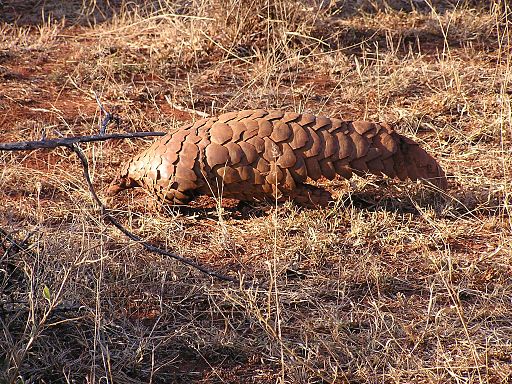
Pangolin (Manis temminckii), Madikwe Game Reserve
When you see one strutting along on its hind legs, you might be forgiven for thinking this is a baby tyrannosaurus.
When it rolls up into a ball, it looks like a projectile from a medieval version of pelota designed for the Spanish Inquisition.
And then it puts forward something that looks like an earthworm the length of a domestic cat, which you realize is its tongue.
Pangolins are amazing creatures. They're mammals with scales, and they can swing from trees by their tails. In the wild, they are pretty much invincible.
The only natural enemy they have are humans.
Pangolins are the most trafficked mammals (if one discounts human trafficking). Their scales are believed to treat a variety of health conditions in traditional Chinese medicine. And eating a pangolin at a Vietnam restaurant will set you back around R5 000 per kilo.
Now, Chinese researchers say that the coronavirus could have spread from bats to humans from pangolins.
South China Agricultural University which published the research says that the genome sequence of the novel coronavirus strain separated from pangolins in this study was 99% identical to that from infected people.
The research found pangolins to be "the most likely intermediate host."
For my part, if the coronavirus forces a halt to pushing pangolins to the brink of extinction, it's a good thing.
Want to know more about pangolins? Check out this piece by John D Sutter.
